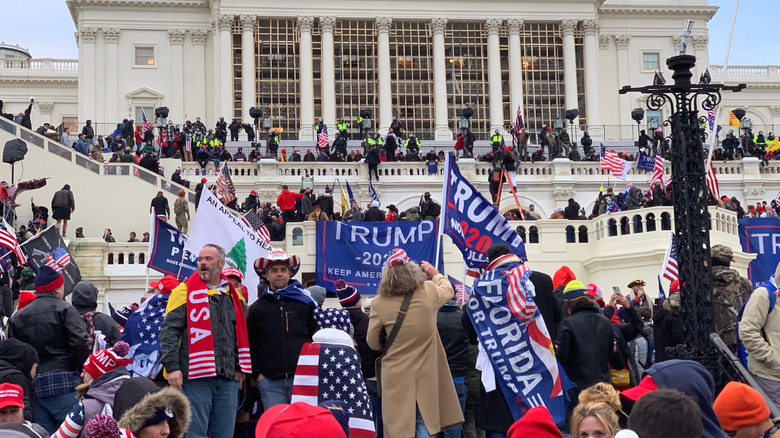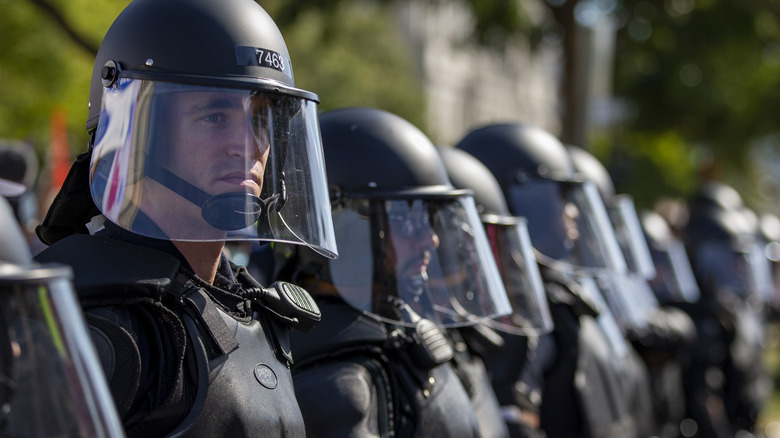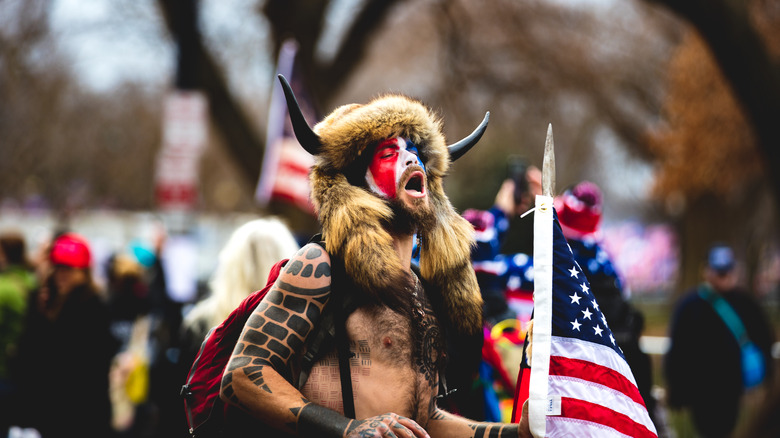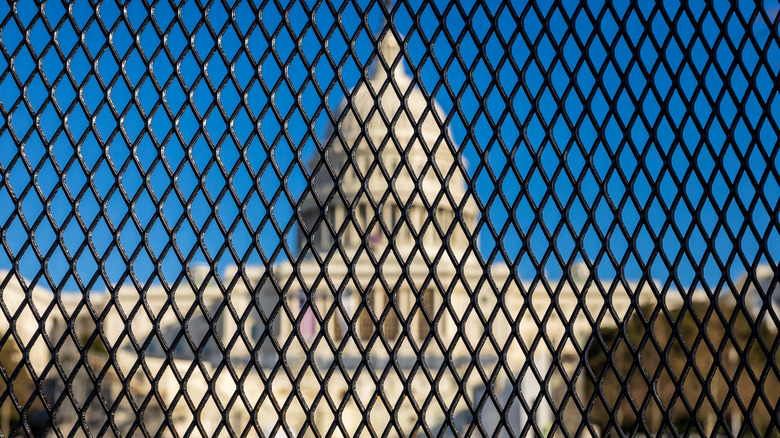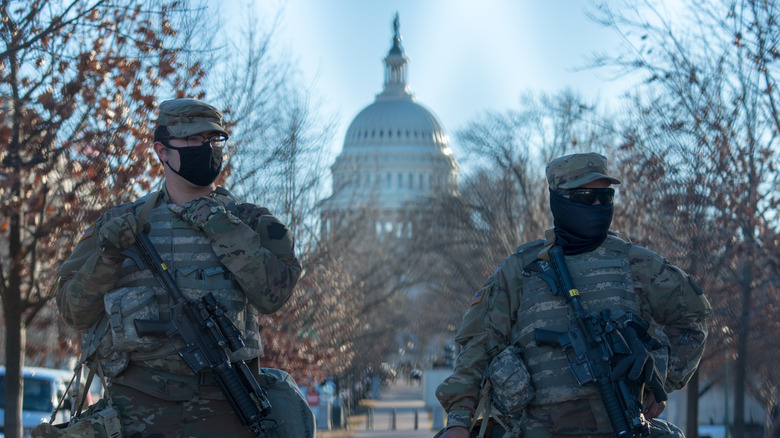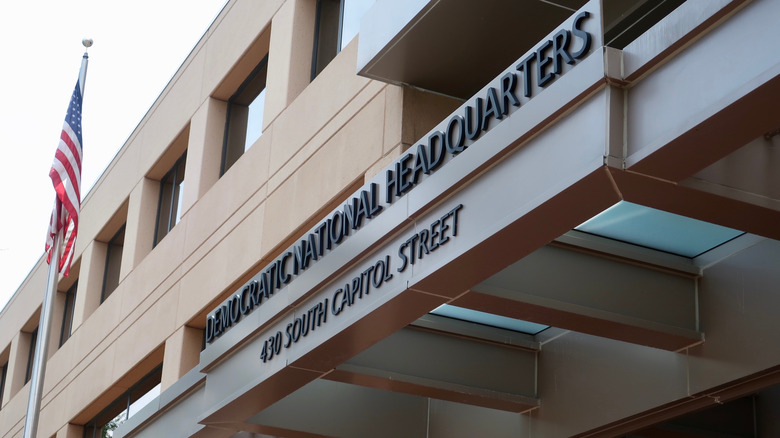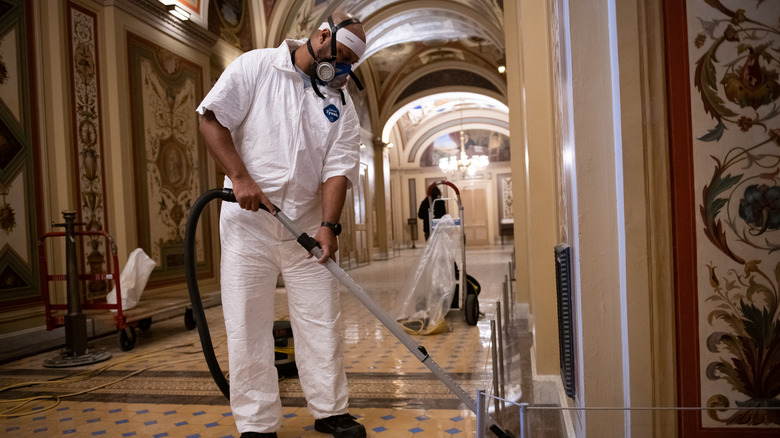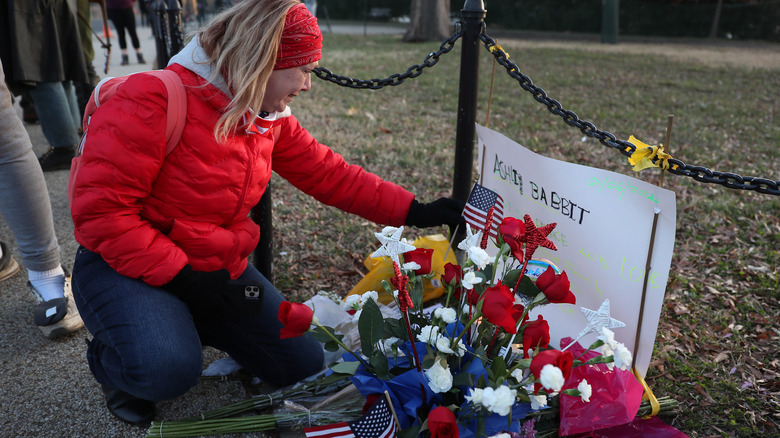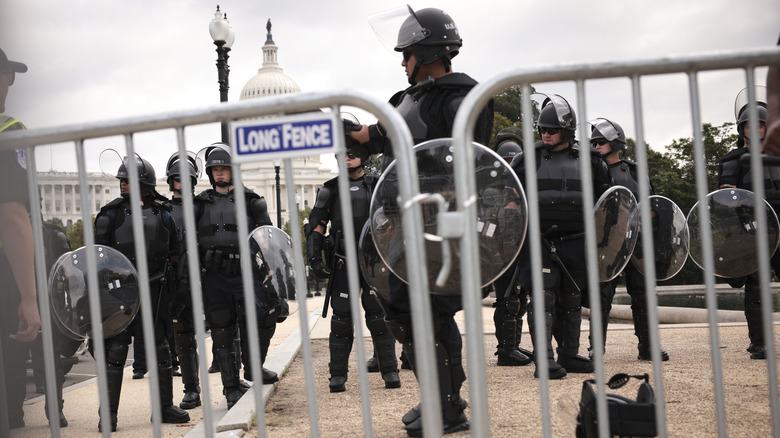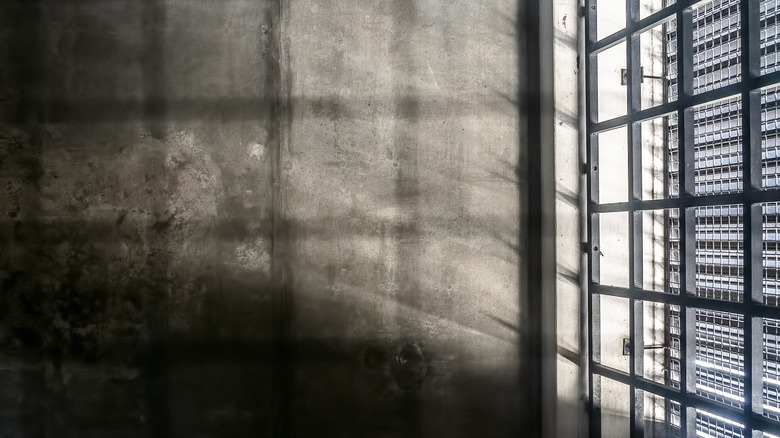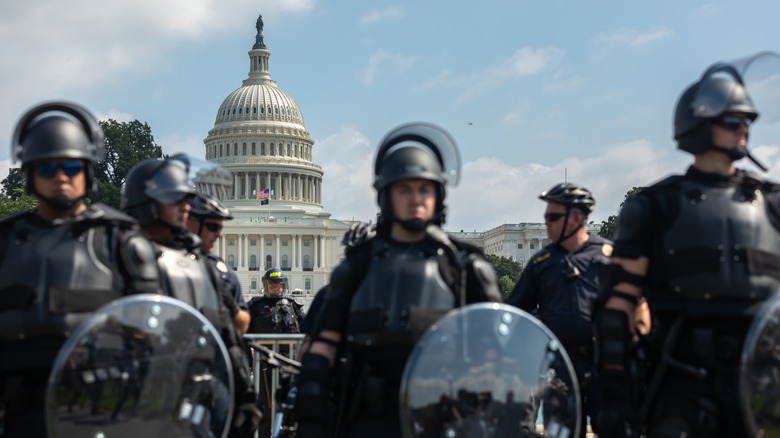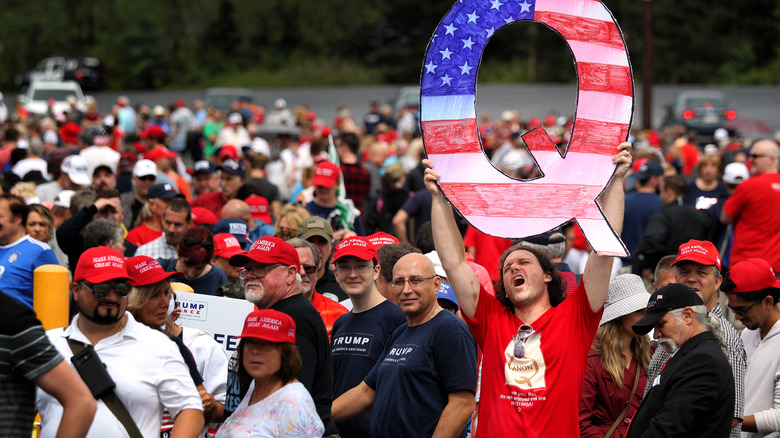The Messed Up Truth About What Happened After The Capitol Riots
As a political and financial center of the United States, political violence is nothing new to Washington, D.C., according to Live Science. The greatest peril ever faced by this metropolis occurred during the War of 1812 when British soldiers invaded Washington, D.C., setting the Capitol building ablaze along with the President's Mansion and other iconic American landmarks. In the tension that prefigured the Civil War, violence broke out at the Capitol, too. United States representative Preston Brooks of South Carolina brutally attacked abolitionist senator Charles Sumner of Massachusetts with a cane.
Some less famous, though equally disturbing, attacks on the Capitol have included its bombing on July 2, 1915, by Eric Muenter, a one-time German professor at Harvard University. Muenter justified his actions as an "appeal for peace" amid the horrors of World War I. Following the Great War, more than 250,000 veterans camped at Congress in 1932, demanding a bonus not scheduled until 1945. (The Great Depression rendered them desperate.) The government removed their camps using gas and torches, resulting in multiple deaths and injuries.
And any student of the 1960s will remember the attempted Weather Underground bombings with explosives planted in Washington, D.C., and other major metropolitan areas. On January 6, 2021, the Capitol riots got added to this infamous list. Here's what you need to know about the messed up events that have occurred in its aftermath.
Unbecoming conduct dogged Capitol cops
On September 12, 2021, Newsweek reported that a handful of Capitol Police officers got rapped for conduct violations related to their service during the January 6 protests. The United States Capitol Police (USCP) launched 38 internal investigations after fielding numerous complaints following the breaching of the Capitol.
The Office of Professional Responsibility (OPR) identified 26 cases involving the USCP. A handful of violations required disciplinary action. One officer got charged with failing to comply with directives. Three other law enforcement officers faced accusations of unbecoming conduct. And one officer got reprimanded for the "improper dissemination of information." Finally, another case continues, involving "unsatisfactory performance and conduct."
Details about the officers involved and their actions on January 6 remain unreleased, as do their names. The USCO gave the following statement regarding these convictions: "The six sustained cases should not diminish the heroic efforts of the United States Capitol Police officers."
Solitary confinement for unconvicted inmates
Following the Capitol riots, around 700 people came under suspicion for their involvement in the violence that took place over four hours, according to Insider. Authorities have released most of these suspects, but dozens faced indefinite incarceration, including former New York Senate candidate Daniel Christmann (via CNBC). Why? Because judges deemed them flight risks with a high threat of obstructing justice. Held without bonds, many of these prisoners faced solitary confinement for 23 hours a day.
This treatment has drawn the ire of Democratic senator Elizabeth Warren and Senate Majority Whip Dick Durbin, as reported by Politico. Senator Warren has even accused law enforcement officials of attempting to "break [the prisoners] so that they will cooperate," explaining that "solitary confinement is a form of punishment that is cruel and psychologically damaging." This advocacy has surprised some. But others have lauded these progressive leaders for their consistency on political justice reform across party lines.
Although Durbin, who heads up the Senate Judiciary Committee, does believe justification for "restrictive housing" (solitary confinement, according to Politico) exists, he argues for its very sparing use. This dialogue has spotlighted a "broader controversy about prisoners' rights" that some hope will lead to more humane conditions overall.
Millions of taxpayers' dollars burned
Following January 6, authorities placed fencing and razor wire around the Capitol. By the end of March 2021, this system of barricades racked up a $19 million price tag, per USA Today. Roughly 25,000 National Guard troops deployed to Washington, D.C., to guard the Capitol, and an estimated 5,000 to 7,000 stayed through mid-March (via Business Insider on MSN), costing an estimated $483 million (via Forbes).
These National Guardsmen, along with the USCP, patrolled the grounds with rifles, destroying the sense of peace and making the area unwelcoming. Portions of the Capitol grounds once open to the public remained prohibited, denying access to iconic historical sites, blocking scenic views of the area, and delaying emergency response to some neighborhoods. According to USA Today, despite the intense political polarization seen in the United States today, the fence came to represent a rallying point for both Democrats and Republicans alike.
Republican firebrand, Representative Lauren Boebert of Colorado, named the fence "Fort Pelosi" and demanded, "Madam Speaker, tear down this wall." While speaking in more moderate terms, House Majority Leader Steny Hoyer, a Democrat from Maryland, also expressed disdain for the rebar and razor wire, stating, "The fencing is obviously a concern to many people, me included." But he noted, "We need to make sure that we can ... secure the seat of government of the United States of America." In The Washington Post, Theresa Vargas argued that Trump's border wall and the Capitol fence shared "the same faulty foundation."
The National Guard ended up in the dog house (or parking garage)
The Biden administration faced harsh criticism after journalists reported that approximately 5,000 National Guard troops stationed in Washington, D.C., had to sleep in a parking garage. According to Business Insider on MSN, the troops initially took breaks and napped inside the Capitol building but were later "ordered to vacate congressional grounds and take their breaks elsewhere."
Besides the unpleasantness of sleeping on concrete during a frigid Eastern Seaboard winter, the accommodations held the potential for unsanitary conditions as thousands of troops had access to only one bathroom with two stalls, one electrical outlet, and no internet access. Photos went viral across social media, drawing condemnation and demands for an investigation from both the left and right sides of the political aisle. President Biden officially apologized to service members, and the U.S. Capitol Police and the U.S. National Guard promised to provide off-duty soldiers with "appropriate spaces."
But the problems didn't stop there. According to the Independent, dozens of troops stationed at the Capitol became sick after eating undercooked meat. Some soldiers alleged receiving meals containing metal shavings, which also incapacitated them. The Detroit News reported a total of 50 Michigan Guardsmen affected, with some hospitalized due to foodborne contamination. This led Michigan House members, including Representative Chris Smith, to ask Democratic Speaker of the House Nancy Pelosi to investigate, per ABC News.
Potential for a super spreader wave loomed
In the weeks following the Capitol riot, Dr. Brian Monahan, attending physician on Capitol Hill, warned legislators of the heightened possibility of contracting coronavirus (via Vanity Fair). Within one week, three Democrat lawmakers tested positive for the illness: Brad Schneider of Illinois, Bonnie Watson Coleman of New Jersey, and Pramilia Jayapal of Washington. Fortunately, all recovered.
On January 12, Politico argued that signs of a COVID-19 spike loomed following the Capitol riots, citing the three virus-positive legislators mentioned above. And CNN reported on January 24 that 38 Capitol Police officers tested positive for the virus. However, the article noted, "It's unclear how many of the 38 officers may have been on duty during the attack or when they contracted the virus."
But fears of a super spreader event soon dissipated. By February 16, NPR concluded that Washington, D.C., did not experience the large wave of new cases predicted a month earlier. They based this report on research by economists at Bentley and San Diego State universities. That said, the article cited evidence that the home counties of those who attended the January 6 riot "experienced a significant increase in the rate of daily cumulative COVID-19 case growth ... and may have contributed to non-localized COVID-19 spread."
The Capitol pipe bomber remains on the lam
In early September, the FBI released new footage of a pipe bombing suspect who placed explosives on a bench near the Democratic National Committee Headquarters on January 6 (via NBC News). In the video, the suspect wears a gray hoodie and mask and carries a backpack. The FBI has conducted over 800 interviews and received 300 tips, yet the alleged bomber remains at large.
This begs the question: What does law enforcement know about the suspect? They believe the suspect is not from the area based on his behavior and corroborative evidence provided during interviews with residents. The FBI has released a virtual map detailing the whereabouts of the potential bomber between 7:30 and 8:30 pm on the evening of January 5.
Assistant director of the FBI's Washington Field Office, Steven M. D'Antuono, continues to appeal to the public, asking for tips that could lead to a potential arrest. The assistant director has stated, "We know it is hard to report information about a friend or family member, but these pipe bombs were viable devices that could have detonated, causing innocent bystanders to be seriously injured or killed. Your tip could be the one that prevents this person from harming themselves or anyone else."
The trashing of the Capitol translated into a messy cleanup
The cleanup after the Capitol riots proved extensive and expensive, from cleaning floors to removing debris and glass and fixing broken windows, according to WUSA 9. On February 24, NPR reported that the architect of the Capitol, J. Brett Blanton, assessed the damage as costing more than $30 million. This price tag included some temporary fencing to protect the Capitol.
Blanton would add to this figure the following qualification, "History teaches us that project costs for replacements and repairs beyond in-kind improvements across campus will be considerable and beyond the scope of the current budgetary environment." He also noted that preparatory construction for Biden's inauguration got destroyed during the riot, including the platform where the Presidential Oath would take place.
After the Capitol riots, a meme circulated of a cleanup crew balling up and throwing an American flag in the trash. It caused a frenzy of anger from people fed up by the flag's mistreatment. This image has since been refuted, according to USA Today. Some claim the flag was collected along with other debris by the Department of Justice as evidence. Although the details surrounding the photo remain ambiguous, the story did draw attention to the massive cleanup effort in the aftermath of January 6.
Five people died during the Capitol riots
In April, Washington, D.C.'s, medical examiner released the official cause of death for four out of five individuals who died during the Capitol riots. USA Today reports Ashli Babbitt, 35, died of a gunshot wound inflicted by Lieutenant Michael Byrd, a federal officer. In an NBC Nightly News interview, Byrd revealed his identity, alleging that the unarmed Babbitt was "posing a threat" (via CNBC).
Kevin Greeson, 55, and Benjamin Phillips, 50, died of cardiovascular disease. Finally, Roseanne Boyland, 34, suffered "acute amphetamine intoxication," per MSN. This finding refuted a report by The New York Times that she died due to "a crush of fellow rioters during their attempt to fight through a police line." The newspaper also said that "videos show[ed] her body on the ground just outside a door on the Capitol's west side that was the scene of the day's worst violence."
A couple of weeks later, Capitol Police officer Brian Sicknick's official cause of death came out. Media sources like CBS News reported that he "was injured while 'physically engaging with protesters.'" But these reports were later corrected. According to the chief medical examiner, Sicknick died from "acute brainstem and cerebellar infarcts due to acute basilar artery thrombosis" (via CBS News). What does this mean in plain speak? He suffered two strokes due to a clotted artery, which the medical examiner ruled a "natural" death.
Four Capitol Police officers committed suicide
Four Capitol Police officers present on January 6 committed suicide in the months after the protest. According to a USA Today article from August 11, they included Jeffrey Smith, Howard Liebengood, Gunther Hashida, and Kyle deFreytag. As these tragedies attest, "Physical and psychological pain persists for police as much as for any soldier in combat, with a tragic parallel lurking at the dark end of that spectrum: deaths by suicide."
Other officers have testified about the incident. They describe a chaotic scene where they felt harassed, endangered, and berated by the crowds thronging towards them. Officer Michael Fanone told CNBC, "I was at risk of being stripped of and killed with my own firearm, as I heard chants of, 'Kill him with his own gun.'"
Adding insult to injury, some officers have expressed disappointment regarding their treatment since the events at the Capitol, especially at the hands of lawmakers. Sergeant Aquilino Gonell of the USCP describes feeling abandoned by the same people he protected on January 6, claiming some have sought to minimize the risk posed that day while others have attacked the character of law enforcement officials. One thing's for sure. This atmosphere made the USCP especially vulnerable to mental health issues in the weeks and months following the riots.
If you or anyone you know is having suicidal thoughts, please call the National Suicide Prevention Lifeline at 1-800-273-TALK (8255).
Rumors of violence meted out against J6 prisoners
Incarcerated individuals involved in the Capitol riots are now referred to as "J6 prisoners" by some. Besides enduring solitary confinement without convictions, some have claimed mistreatment by correctional officers. According to CBS News, the most shocking accusations have come from Washington, D.C., lawyer Elizabeth Pasqualini, who defends Ryan Samsel of Bristol, Pennsylvania. Samsel faces charges of knocking down a female police officer, resulting in a concussion. In an interview with WUSA-TV reported on by MSN, Pasqualini claimed Samsel's hands were zip-tied by prison guards before he suffered a vicious beating.
Pasqualini alleges, "He has definitely suffered serious injuries, including a shattered orbital floor, a broken orbital bone, his jaw was broken, his nose was broken." She also stated that the beating caused Samsel to lose sight in his right eye. This loss of vision may prove permanent. Following what Pasqualini referred to as a "beatdown," her client required hospitalization and had to have his jaw wired shut, per CBS News.
Director Quincy Booth of the D.C. Department of Corrections (DOC) has rebutted, "DOC has conducted an investigation into allegations made by an inmate regarding our correctional officers and found there was not any violent interaction between the inmate and any correctional officer." Like the January 6 protests, the treatment of J6 inmates has polarized a nation already deeply divided by politics. Nowhere is this better exemplified than a Rasmussen Reports poll released in September that found 49 percent of likely voters believe J6 inmates are "political prisoners."
More protests in the wake of the January 6 violence
Since the Capitol riots, the District of Columbia has remained on high alert. Dates deemed significant to supporters of the J6 protesters and President Trump have seen increased security. They include March 4, thought by some to signal the return of Trump to power. They allegedly based these claims on a theory about the United States of America. The theory argues the U.S. transitioned "from a country into a corporation after the passage of the District of Columbia Organic Act of 1871" (via the BBC).
For some, March 4 also holds significance as the original inauguration date of American presidents before the U.S. Constitution's 20th amendment, ratified in 1933. That said, few people mobilized to protest in Washington, D.C., at the beginning of March. Some within the community warned of "false flags," which may have helped keep the event small and largely uneventful.
Despite the controversy caused by the first 7-foot razor wire wall placed around the Capitol, barriers got re-erected in anticipation of September 18 (via Business Insider on MSN). Authorities feared violence during the "Justice for J6," a rally organized to call national attention to the J6 prisoners. While it's hard to find figures stating how much this cost, it likely exceeded millions (like the first wall construction). According to The Denver Gazette, the "Justice for J6" protest proved a non-event, drawing more law enforcement than protesters.
Deep national rifts fueled by extremist content
As the political division has continued to grow in America, it has fueled extremist content from both sides. But the spotlight has been cast most widely on adherents of Q. Often referred to as QAnons, these individuals have placed their faith in a series of drops via 4chan by one or more individuals known as "Q" (via the BBC).
The Washington Post describes 4chan as "a series of wholly anonymous, anything-goes forums ... not terrifically different from Reddit, Something Awful, or other large-scale Internet forums." But unlike other forums, you don't have to register, so there's little accountability. The growth of QAnon ranks and extremist rhetoric led to Twitter's banning of 70,000 accounts based on specific keywords and hashtags (via the BBC). Other social media channels followed suit, citing divisive rhetoric by so-called QAnon accounts, especially before dates like January 6 and March 4.
This approach to limiting extremist content has led to debates about "Cancel Culture" and First Amendment rights. It has also contributed to a deepening rift within the nation as people with opposing views retire into "echo chambers" that reinforce what they want to believe. Center for Politics director Larry Sabato observes, "The divide between Trump and Biden voters is deep, wide, and dangerous. The scope is unprecedented, and it will not be easily fixed" (via the New York Post). Ultimately, this deepening division may represent the most messed up and troubling trend seen since the Capitol riots.
